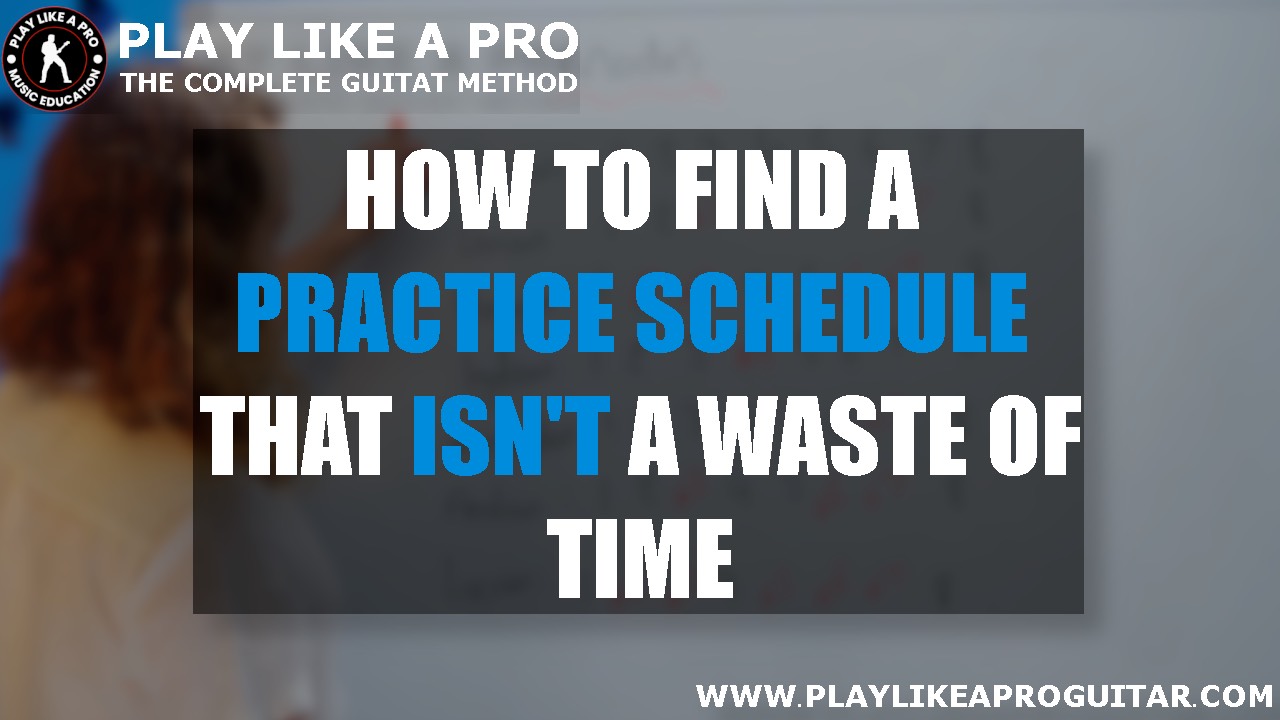Break Out of the Scalic Box and Unlock the Fretboard
Do you feel trapped playing the same scale shapes in one area of the neck? If your solos feel “boxed in,” it’s time to break out of the scalic box and discover how to move freely across the guitar neck.
In this blog, we’ll explore why box patterns limit your playing, exercises to connect the fretboard, and practical drills to unlock the fretboard for improvisation and creative expression.
Why Box Patterns Can Hold You Back
Boxed scale patterns are easy to memorize, but relying solely on them:
-
Limits improvisational options
-
Forces repetitive phrasing
-
Hinders fretboard visualization
-
Prevents fluid transitions across octaves and modes
Breaking out of boxes is the key to playing like a professional guitarist, seeing the fretboard as an interconnected system rather than isolated shapes.
Exercises to Break Out of the Scalic Box
Exercise 1: Diagonal Linking Patterns
-
Pick a scale (e.g., A minor pentatonic).
-
Start in Box 1 and move diagonally acr
...
Unlock the Fretboard: Master Major Modes on Guitar

Do you want to improvise freely across the guitar neck without relying on the same licks or familiar patterns? Learning major modes is one of the most powerful ways to unlock the fretboard and play with musical freedom.
In this guide, we’ll break down the seven major modes, show exercises to internalise them, and provide practical drills that you can apply immediately in solos and improvisation.
Why Major Modes Matter
Major modes aren’t just academic theory—they give your playing color, emotion, and structure. Knowing them helps you:
-
Play melodies that sound distinct and expressive
-
Move seamlessly across the fretboard
-
Connect scale patterns with chords and arpeggios
-
Break out of the “box” mindset and improvise creatively
When combined with pentatonic boxes, octave mapping, and interval work, mastering modes is a key step to truly unlock the fretboard.
The 7 Major Modes
Each mode is derived from the major scale but starts on a different degree, crea...
The 5 Pentatonic Scales Every Guitarist Must Know to Unlock the Fretboard
If you’ve ever felt stuck playing in just one position, it’s time to unlock the fretboard using the 5 pentatonic scale patterns. These scales are the foundation of countless solos, riffs, and improvisation techniques. In this blog, we’ll break down each pattern, show you exercises to connect them, and give practical drills to move freely across the neck.
By the end, you’ll be able to navigate all five boxes with confidence, turning the guitar neck into a seamless musical landscape.
Why Learn the 5 Pentatonic Scales?
The 5 pentatonic patterns cover the entire neck in all keys. Mastering them allows you to:
-
Improvise in any position
-
Connect scales with chord tones
-
Play solos that move fluidly up and down the neck
-
Break out of static “box” patterns
When you combine these scale patterns with octave mapping and interval exercises, you truly unlock the fretboard and gain the freedom to play anywhere.
The 5 Pentatonic Boxes
Each pentatonic scale can be vi...
Master Octave Mapping on the Guitar Neck to Unlock the Fretboard
Do you feel trapped in the same areas of the guitar neck? Struggling to improvise beyond familiar licks and shapes? Octave mapping is one of the most powerful tools to unlock the fretboard and play with freedom. In this blog, we’ll cover everything from the basic octave shapes to practical exercises that you can apply immediately.
By the end, you’ll have a step-by-step approach to see the neck as a connected, intuitive space—just like professional guitarists do.
Why Octave Mapping Matters

Octaves are the same note at a higher or lower pitch. Mastering octave shapes and their positions helps you:
-
Find any note on the neck instantly
-
Visualize scale and chord connections
-
Expand improvisation possibilities
-
Move beyond “box” patterns
When you know your octaves, you’re not just memorising shapes—you’re learning to unlock the fretboard and create music anywhere.
Understanding Octave Shapes
There are three main octave shapes every guitarist should know:...
Unlock the Guitar Fretboard: Play Anywhere on the Neck with Confidence
Most guitarists feel “boxed in” when they play — stuck in a few shapes or patterns.
The truth is, once you understand how the fretboard works, you can move anywhere on the neck and solo or comp with total freedom.
In this guide you’ll learn the core principles to finally unlock the fretboard, plus see a full video lesson. If you want a step-by-step system to master this in just 10 days, check out my 10 Days to Fretboard Freedom program.
Why Guitarists Get Stuck
-
Learning shapes, not music – memorising random scale patterns without knowing how they connect.
-
No “map” of the fretboard – not linking notes to intervals, chord tones or keys.
-
Practicing in isolation – never applying concepts in real songs or improvisation.
The good news: once you connect the shapes and know where the notes live, the fretboard becomes one connected system.
Step 1: Learn the Root Notes
Start by memorising the root notes on the 6th and 5th strings.
Knowing exactly where your tonic sit...
Finding a Guitar Practice Schedule That Isn’t a Waste of Your Time

You sit down to practice, run through a few licks, noodle a bit… and after 30 minutes, you’re not sure what you achieved. Sound familiar? Here’s how to build a schedule that gets results.
Why Random Practice = Random Results
Without a plan, you’re basically spinning a roulette wheel every time you pick up the guitar. No wonder progress feels slow.
What a Good Schedule Looks Like
Every effective session has three parts:
-
Warm-Up: Finger exercises, stretching, picking drills.
-
Focused Goal Work: The skill you’re actively improving (scales, chords, improvisation).
-
Application: Play a song, improvise over a backing track, or write a riff using the new skill.
Adapting to Your Life
Busy? Even 15 minutes can work: 3 min warm-up, 10 min goal work, 2 min application. Got an hour? Double those blocks.
Tools That Help
A simple timer, a practice notebook, or an app like Anytune can keep you on track.
Sample 45-Minute Schedule
-
5 min – Warm-ups
-
20 min
...
How to Instantly Clean Up Your Chord Changes

One of the biggest frustrations for guitarists? Sloppy chord changes. Buzzing strings, slow transitions, broken rhythm – we’ve all been there. Luckily, there are a few simple fixes you can start using today.
Why Chord Changes Trip You Up
Most players think they just need to “practice more.” But messy changes come from poor finger planning, weak anchors, and not training your muscle memory properly.
Exercise 1: Finger Anchoring
Look for fingers that stay on the same string/fret between chords. Keep them planted as you switch – this cuts your movement in half.
Exercise 2: Slow Transitions with a Metronome
Set a slow tempo and switch between two chords on each click. Only speed up when you can switch cleanly at the slow speed.
Exercise 3: “Ghost” the Next Shape
Before you lift your fingers off the current chord, silently form the next shape in your mind. Then switch.
Exercise 4: Practice With Your Eyes Closed
I know it sounds weird, but trust me, if you can visualise cho...
How to Build a Guitar Practice Plan That Actually Works

Most guitarists want to improve but end up spinning their wheels. They practice random songs, skip warm-ups, and feel frustrated when nothing sticks. Sound familiar? The good news: a solid practice plan can turn your time into real progress.
Why Most Practice Plans Fail
Random routines, no goals, and lack of feedback. Without structure, even dedicated players plateau.
Step 1: Define Your Goals
Be specific. “I want to improve” isn’t enough. Write down: “I want to nail barre chords,” “Play a full solo over a 12-bar blues,” or “Memorize the fretboard.” This clarity will drive your plan.
Step 2: Audit Your Current Level
List what you can already do easily and what you’re struggling with. This lets you prioritise.
Step 3: Allocate Time Wisely
If you’ve got 30 minutes a day, spend 5 minutes warming up, 15 minutes on your biggest goal, 5 minutes applying it to a song, and 5 minutes reviewing.
Step 4: Warm-Ups + Daily Exercises + Application
Start with finger independence and stret...
Is an Online Guitar Course Right for You? Pros and Cons Explained

If you're thinking about learning guitar online, you're not alone. Online guitar courses are more popular than ever — and for good reason. But is this method right for you?
In this post, we’ll break down the pros and cons of online guitar lessons, so you can decide if it’s the right path for your learning style, lifestyle, and goals.
✅ The Pros of Learning Guitar Through an Online Course
1. Learn on Your Own Schedule
Online guitar lessons are available 24/7. No need to commute, coordinate schedules, or stress about being late.
Perfect for: Busy adults, parents, or anyone balancing work and hobbies.
2. Progress at Your Own Pace
No pressure to "keep up" with a class or teacher. You can rewatch lessons, slow them down, and stay on a topic as long as you need.
3. Cost-Effective
Most online guitar courses cost far less than in-person lessons — and you get lifetime access in many cases.
4. Structured Learning Path (If the Course Is Good)
A well-designed course will guide you st...
Beginner Guitar Practice Routine: What to Practice and Why It Matters

So you’ve started learning guitar — great! But now comes the question: what should you actually be practicing every day?
Without a clear routine, beginner guitar practice can feel scattered and frustrating. The truth is, a simple and consistent guitar practice schedule can unlock faster progress, better technique, and long-term motivation.
Why a Beginner Guitar Practice Routine Matters
Many beginners waste time not because they’re lazy — but because they don’t know what to focus on. A good routine gives you:
-
Clear goals (so you’re not guessing every day)
-
Structured repetition (which builds muscle memory)
-
Visible progress (which keeps motivation high)
Your Core Daily Guitar Exercises (30–45 Minutes)
This sample daily beginner routine helps you cover the essentials while staying flexible:
✅ Warm-Up (5 mins)
-
Finger stretches
-
Chromatic patterns (e.g., 1-2-3-4 on each string)
✅ Chords & Transitions (10–15 mins)
-
Practice 2–3 chord shapes
...





